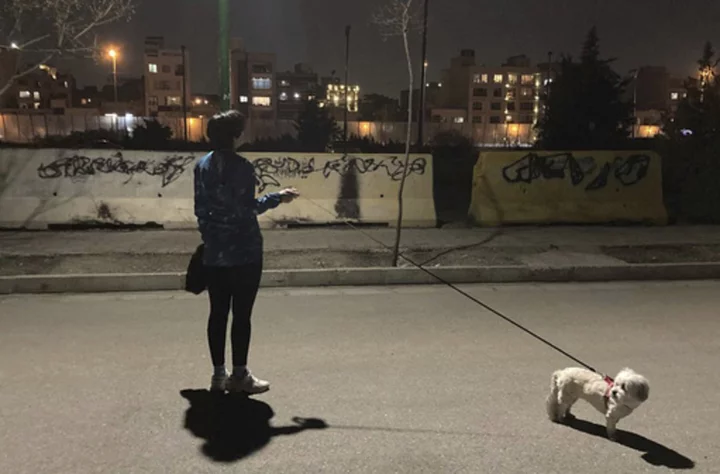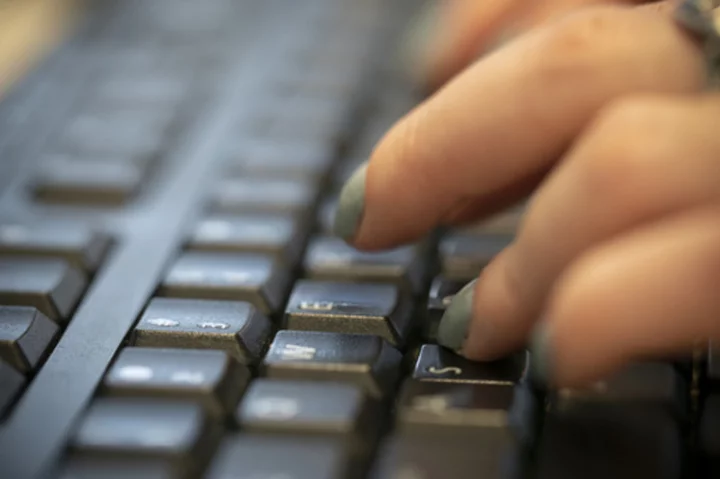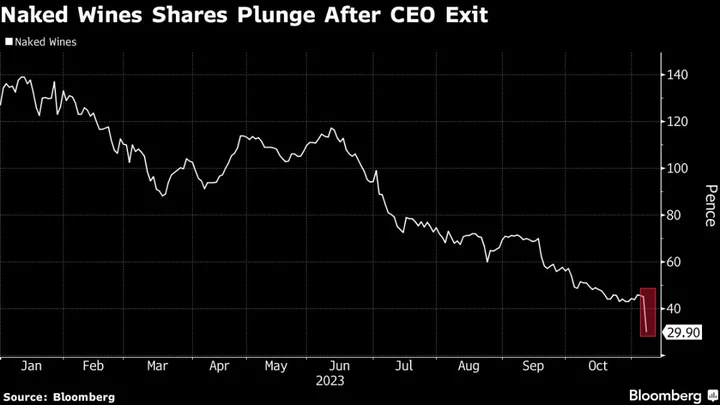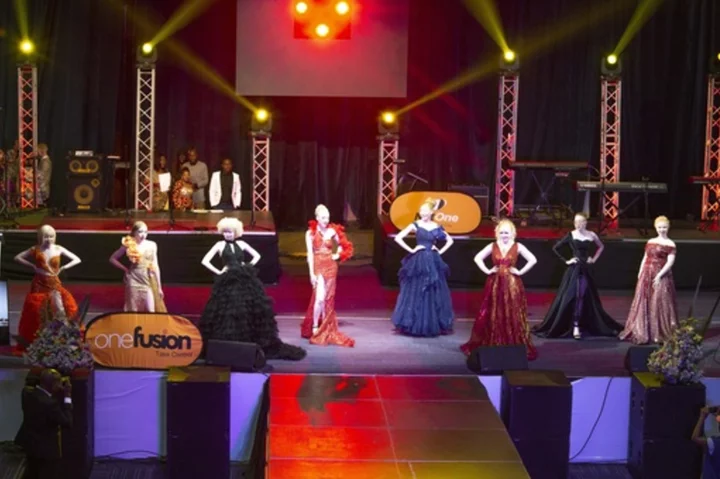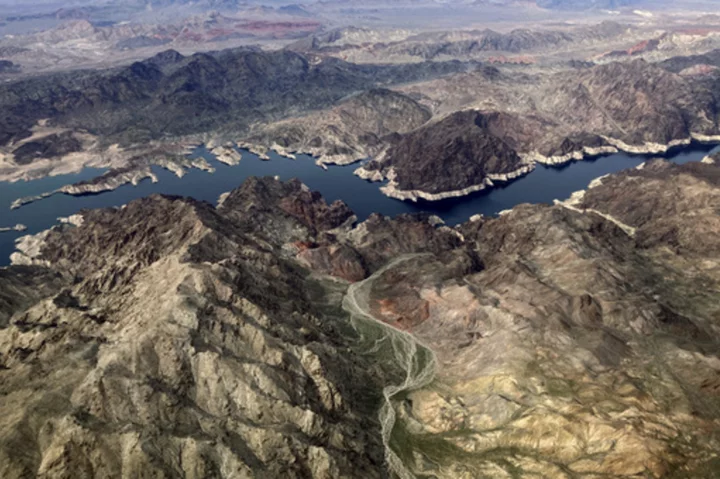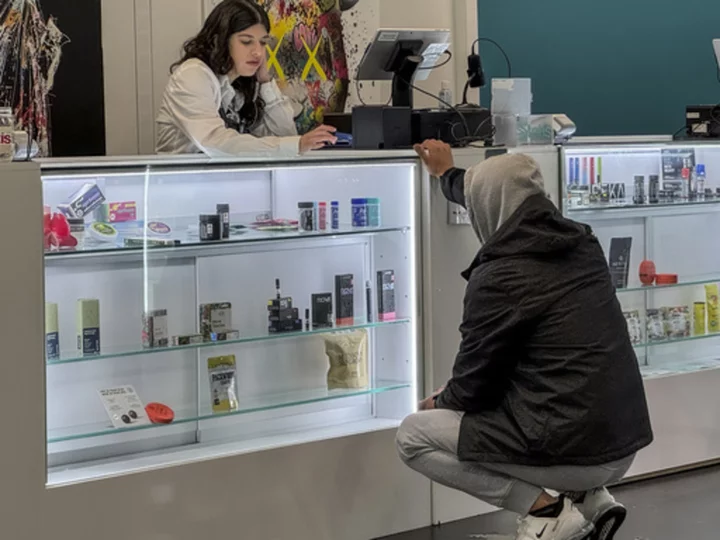TEHRAN, Iran (AP) — Snap checkpoints. Internet disruptions. University purges.
Iran's theocracy is trying hard to both ignore the upcoming anniversary of nationwide protests over the country's mandatory headscarf law and tamp down on any possibility of more unrest.
Yet the Sept. 16 death of 22-year-old Mahsa Amini still reverberates across Iran. Some women are choosing to go without the headscarf, or hijab, despite an increasing crackdown by authorities.
Graffiti, likely against Iran's government, is rapidly painted over in black by Tehran's municipal workers. University professors have been fired over their apparent support for demonstrators.
International pressure remains high on Iran, even as the administration tries to deescalate tensions with other nations in the region and the West after years of confrontation.
“The weaponization of ‘public morals’ to deny women and girls their freedom of expression is deeply disempowering and will entrench and expand gender discrimination and marginalization,” independent United Nations experts warned earlier this month.
The demonstrations over Amini's death that erupted after her arrest a year ago by the country's morality police, allegedly over the hijab, represented one of the largest challenges to Iran's theocracy since the 1979 Islamic Revolution. A security force crackdown that followed saw over 500 people killed and more than 22,000 people detained.
Iran's government, including Supreme Leader Ayatollah Ali Khamenei, have blamed the West for fomenting the unrest, without offering evidence to support the allegation. However, the protests found fuel in the widespread economic pain that Iran's 80 million people have faced since the collapse of Iran's nuclear deal with world powers after then-President Donald Trump in 2018 unilaterally pulled America from the accord.
As Western sanctions came back, Iran currency — the rial — cratered, decimating people's lifesavings. Prices of food and other essentials skyrocketed as inflation gripped the nation, in part due to worldwide pressures following the coronavirus pandemic and the launch of Russia's war on Ukraine. Unemployment officially stands at 8% overall, though one out of every five young Iranians is out of work.
Videos of the demonstrations last year showed many young people taking part in the protests, leading authorities to apparently focus more closely on Iran's universities in recent weeks. There's historic precedence for the concerns: In 1999, student-led protests swept Tehran and at least three people were killed while 1,200 were detained as demonstrations rapidly spread to other cities.
Though university campuses have largely remained one of the few safe places for students to demonstrate, even campuses have felt the latest crackdown. Over the past year, the Union Council of Iranian Students has said that hundreds of students faced disciplinary panels at their universities over the protests.
During the same period, at least 110 university professors and lecturers have been fired or temporarily suspended, according to a report by the reformist newspaper Etemad. The firings have been primarily focused at schools in Tehran, including Tehran Azad University, Tehran University and Tehran Medical University.
Etemad said those who were dismissed fell into two groups: teachers concerned by the election of hard-line President Ebrahim Raisi and those who supported the protests that followed Amini's death.
But there were firings at other schools as well.
At Tehran’s Sharif University of Technology, outspoken artificial intelligence and bioinformatics professor Ali Sharifi Zarchi, who backed his students taking part in the protests and later faced interrogation by Iranian security forces, was among those laid off.
A petition urging the university to overturn his firing was signed by 15,000 people.
“Putting pressure on professors and students is a black stain on the proud history of #Tehran_University and it must be stopped,” Zarchi wrote online before his dismissal.
University teachers who were dismissed also included Hossein Alaei, a former commander in the paramilitary Revolutionary Guard and vice defense minister, and Reza Salehi Amiri, a former culture minister. Alaei had once, a decade ago, compared Khamenei to Iran's former shah, while Amiri was a former official in the administration of the relatively moderate President Hassan Rouhani.
Rouhani, whose government reached the nuclear deal with world powers in 2015, has criticized the university firings.
“Destroying the prestige of the universities and their professors ... is a loss for the students, science and the country,” Rouhani said, according to a report by the online news site Jamaran.
The head of Tehran University, Mohammad Moghimi, had tried to defend the dismissals, describing professors as facing “ethics problems.” Some hard-liners also have tried to insist the firings weren't political, though the hard-line newspaper Kayhan directly linked the dismissals to the demonstrations.
“It is not logical to allow someone to propagate against the system under the direction of foreigners,” the newspaper wrote.
Those on the streets of Tehran say the governments' move will likely make the situation worse.
“They want to insert their own people in the university in hope of stopping the protest, but we students will show our objections in a way that they cannot imagine,” said Shima, a 21-year-old university student. “They failed to prevent last year's protests since nobody can predict earthquakes.”
Authorities “are fighting against windmills using wooden swords,” added Farnaz, a 27-year-old university student. Both women gave just their first name for fear of reprisals.
The government has been trying to stay publicly quiet about the anniversary. Raisi never said Amini's name during a recent news conference with journalists — who also only tangentially referred to the demonstrations. State-run and semiofficial media in Iran as well have avoided mentioning the anniversary, which typically signals pressure from the government.
But privately, activists report a rise in the number of people being questioned and detained by security forces, including an uncle of Amini.
Saleh Nikbakht, a lawyer for Amini's family, faces a court case accusing him of spreading “propaganda” over his interviews with foreign media.
More police officers have been noticed on Tehran's streets in recent days, including snap checkpoints for those riding on motorcycles in the country's capital. Internet access has been noticeably disrupted over recent days, according to the advocacy group NetBlocks.
And abroad, Iranian state media reported that someone set tires ablaze in front of the Iranian Embassy in Paris over the weekend. Demonstrations marking the anniversary on Saturday are planned in multiple cities abroad.
___
Gambrell reported from Dubai, United Arab Emirates. Associated Press writer Amir Vahdat in Tehran, Iran, contributed to this report.

